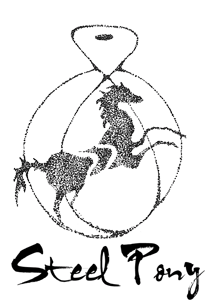 We think of our sink like a magical portal. We pour things down the drain, and they disappear, reducing the time we need to clean. Rarely do we think about what happens to the things we put down the drain – out of sight and out of mind.
We think of our sink like a magical portal. We pour things down the drain, and they disappear, reducing the time we need to clean. Rarely do we think about what happens to the things we put down the drain – out of sight and out of mind.
However, the drain isn’t magical at all. Everything we put down the drain ends up in sewer plants and ultimately make its way to lakes, streams, and oceans. Although water treatment facilities try to remove contaminants, 40 percent of lakes in America are still too polluted for aquatic life. So, what can you do to help? Try to avoid pouring these things down your drain.
- Medications
30 percent of people report flushing unused medication down the toilet, and at one point, doctors used to recommend toilets and sinks as proper disposal for medication. However, now it has been found to contaminate waters and impact fish with negative growth and behaviors. Birth control pills prevent mating in fish, antidepressants decrease a fish’s effectiveness to hide from predators, and other medications prevent proper growth.
Instead of pouring your medications down the drain, dispose of them through a pharmacy take-back program or throw them in the trash mixed with kitty litter or coffee grounds.
- Personal Care Products
We dump about 33 liters of products into the sewage each year. However, these products can cause endocrine system disruption in fish and lead to behavior problems, compromised immune systems, and even cancer. This can then pass through the ecosystem and effect the things that eat the fish – including humans.
The best way to avoid this pollution is to use natural products without sodium lauryl sulfate and phthalates. If that’s not possible, consolidate all old liquids into one bottle and recycle the empty bottles. Then, contact your local Household Hazardous Waste facility and see if they will take the liquid.
- Flammable Substances
Substances such as lighter fluid, kerosene, gasoline, and nail polish remover can put out dangerous gases that can catch fire. They are also corrosive and can damage pipes as well as aquatic life. Instead of putting them down the drain, seal them in a container and dispose of them at a local hazardous waste collection facility.
- Paint
Paint contains biocides that is a pesticide that can promote mold growth that clogs drains and pollutes the environment. Many cities have different requirements for paint disposal, so you may want to locate the information relevant to your municipality. However, in general, you should take the lid off paint cans and let the paint dry. You can also mix it with an absorbent material like cat litter of saw dust to help it dry. Then, throw out dried paint at a hazardous waste site.
- Oils and Grease
About 50 percent of sanitary sewer overflows in the United States are due to fat, oil, and grease that is poured down the drain. This has led to 3.5 million people getting sick from swimming in waters infected with sewage overflow.
To prevent this, you should store oils and grease in tightly closed containers and then dispose of them at your local waste disposal facility.
Just a few extra steps a day can help our environment. We only have one Mother Earth so it’s important that we properly dispose of our waste so that we can help her live as long as possible.


